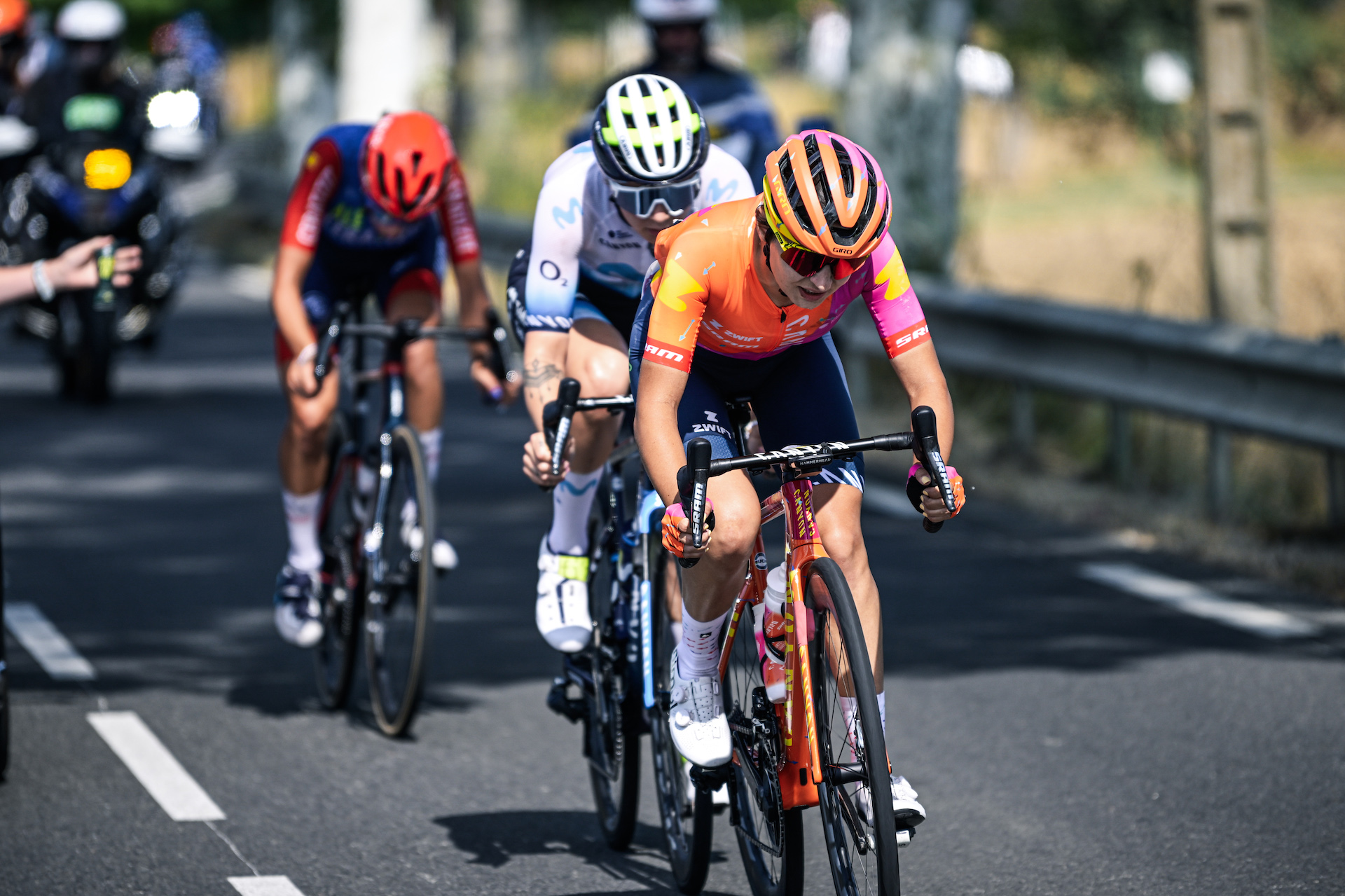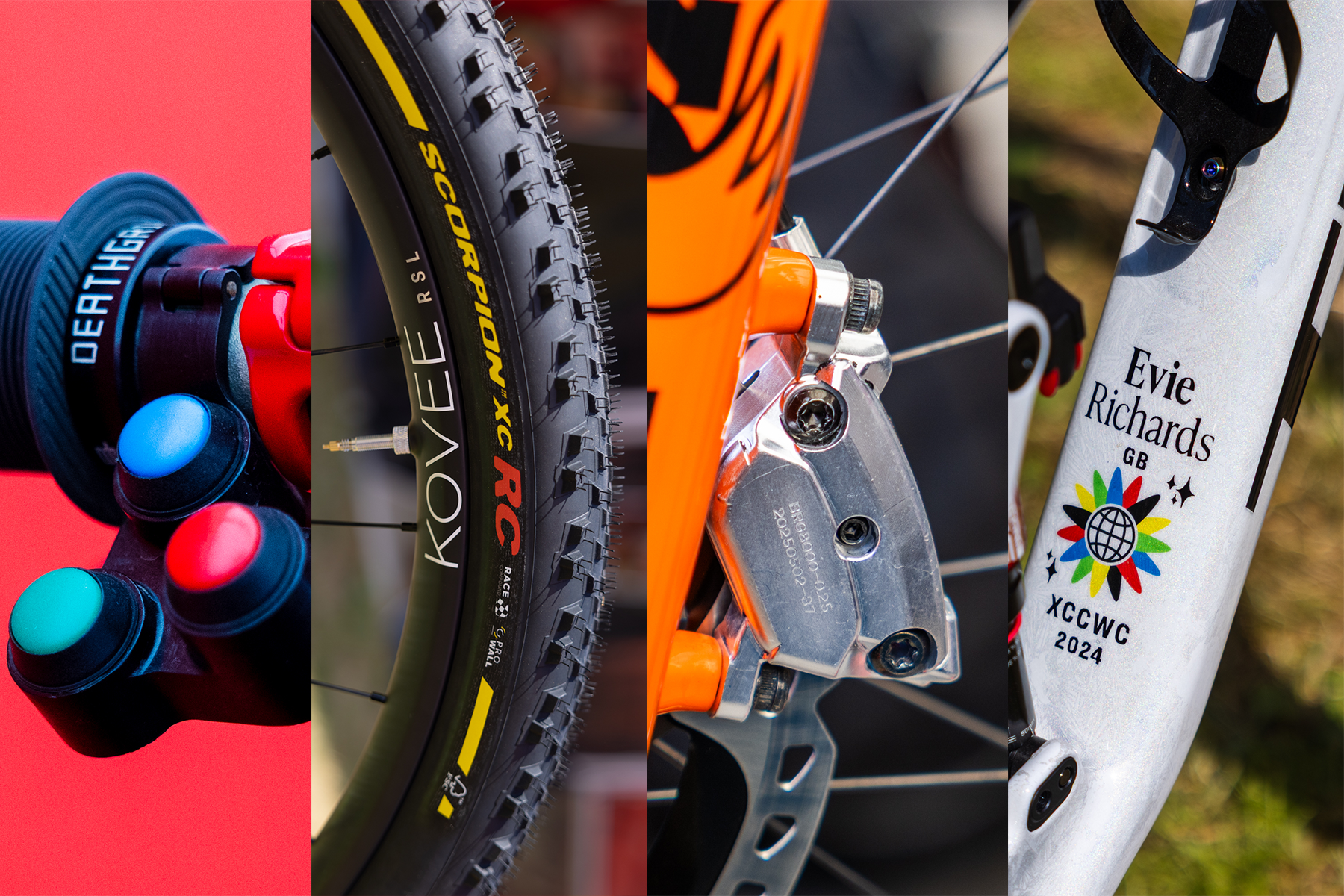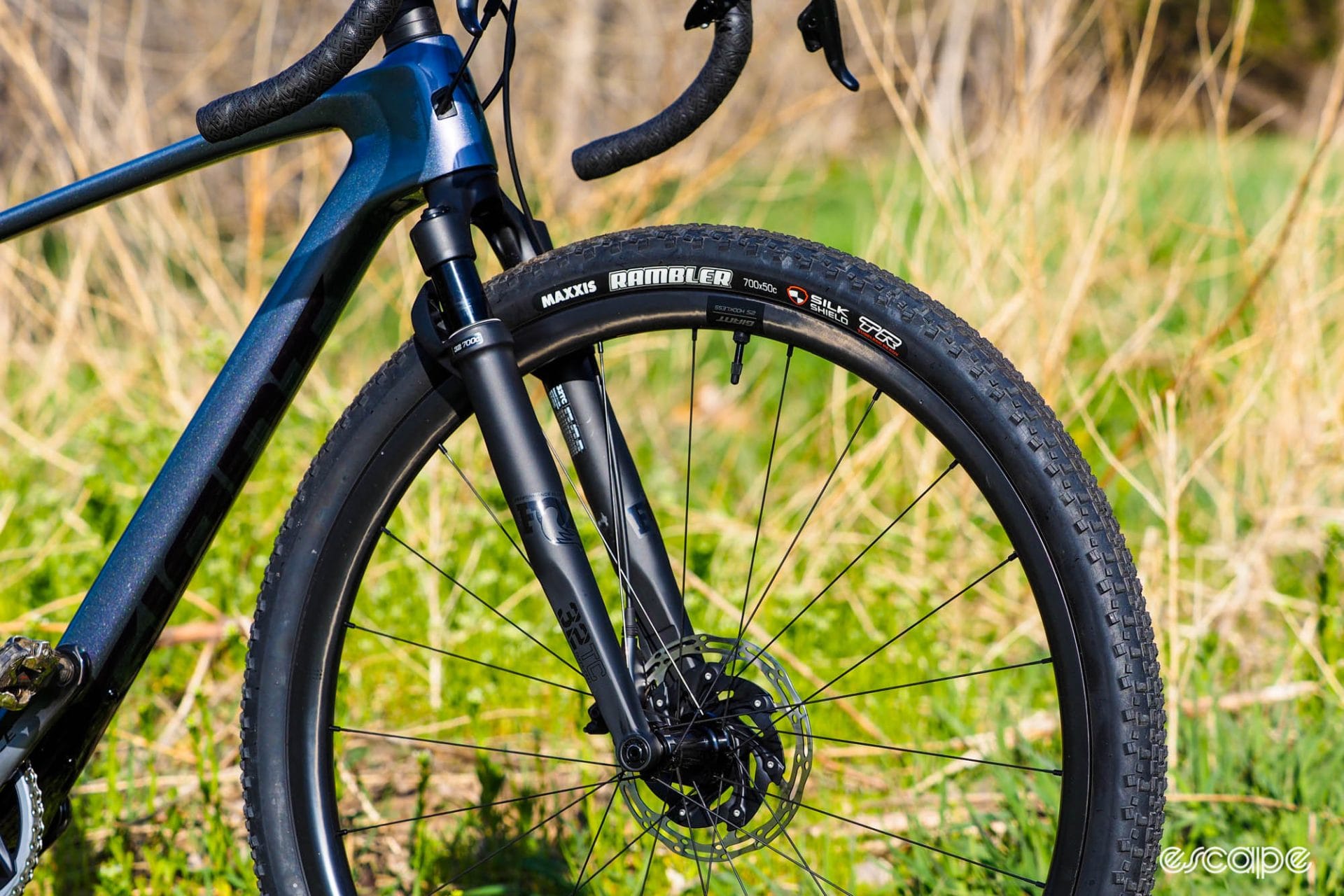It’s a brutal reality of bike racing that the difference between success and failure is often so small. A second here, a metre there – in the context of a three-hour stage spanning 122 km, these margins are near-infinitesimal.
On stage 6 of the Tour de France Femmes avec Zwift, just a single second separated stage winner Emma Norsgaard from those fighting for victory behind. The best sprinters in the bunch were there, breathing down Norsgaard’s neck, falling just short. But so was Norsgaard’s former breakaway companion, Agnieszka Skalniak-Sójka, who fell just short in a different way.
The breakaway had been three riders – Norsgaard, Skalniak-Sójka, Sandra Alonso – until 4.2 km to go. But at that moment, with the bunch just 15 seconds behind and closing in, Norsgaard surged clear with only Skalniak-Sójka able to follow. Six hundred metres from the finish in Blagnac, and the peloton a mere four seconds behind, Norsgaard went again. Again the two-time Polish time trial champ from Canyon-SRAM could follow, and then she couldn’t.
With 450 metres to race, the Dane was clear and racing to victory. When she crossed the finish line, the peloton was just 25 metres behind, Skalniak-Sójka in their midst.
Past the finish line, Skalniak-Sójka broke down in tears, the combination of exhaustion, frustration, and disappointment bubbling to the surface. She’d done all the right things, and had been in – and indeed started – the winning break. But perhaps that fact made the frustration more acute; perhaps it wouldn’t have hurt quite as much had the whole break been caught.
She’d been right there, in the winning move, until 500 metres to go. She just couldn’t hold the wheel.
By the time Skalniak-Sójka’s arrives at the mix zone to speak to the press, her tears have subsided. She’s been to the podium as the day’s most combative rider and has had a chance to compose herself.
“I think I gave my all,” she says, smiling. “I’m proud of this, and also, I'm disappointed. But yeah, it's cycling and it can happen.”
Skalniak-Sójka got away on the first climb of the day with Alonso for company. She was on her own for a time when Alonso was dropped, before the Spaniard rejoined the front with Norsgaard for company. The trio worked well together, keeping the peloton at bay, until Norsgaard’s attack with 4.2 km to go left just her and Skalniak-Sójka out front.
“The last one km she was sitting on my wheel,” Skalniak-Sójka says, the frustration evident in her voice. “I went full gas until the end. But yeah, she's a sprinter and she made it and in the end, I'm in the bunch.”
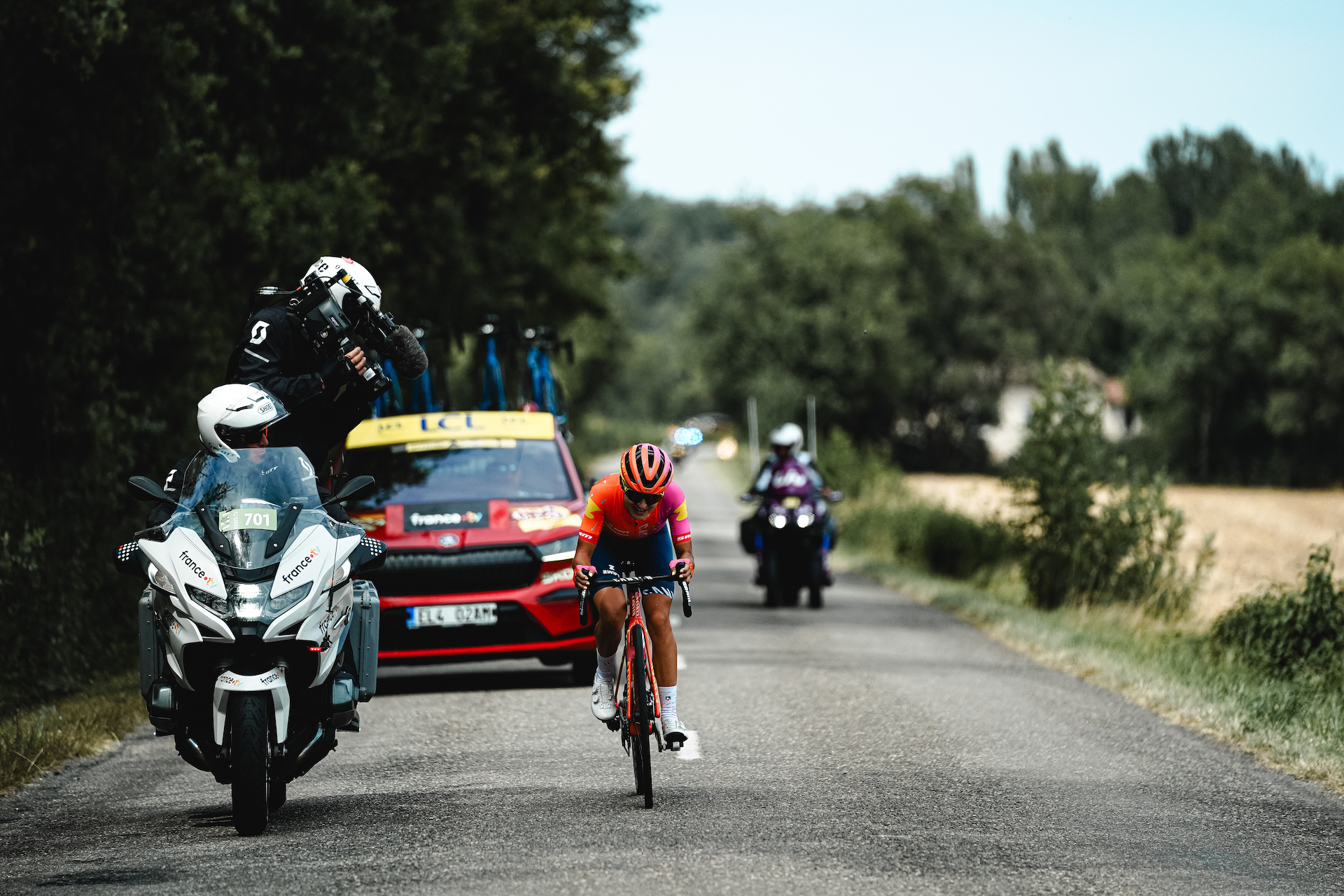
Skalniak-Sójka wasn’t the only one ruing her misfortune. The sprinters, too, were left wondering what might have been.
Across the finish line, overall leader Lotte Kopecky bashed her handlebars in frustration after taking third on the day. In her press conference later, she offered conflicting views of the sprinters’ near miss. When asked why breakaways have been so successful at this year’s Tour, she was succinct.
“I don't know,” she said. “Maybe we need to start to learn how to count.” A hint that perhaps the peloton misjudged the chase. But then a moment later, she suggested that the bunch couldn’t have done anything different.
“I think the break was really strong,” she said. “It was not that the peloton was not chasing. There were two or three teams who were fully chasing. Again, the gap went down pretty fast but then in the final the breakaway was stronger than probably everybody expected.”
Kopecky still has plenty to celebrate from this year’s Tour – a stage win on the opening day, six days in the yellow jersey. Charlotte Kool, on the other hand, will feel today’s near-miss even more keenly. She was the best of the sprinters, taking second on the day behind Norsgaard, and will now leave the Tour winless.
“I think this is actually a nightmare,” Kool said immediately after the finish, downcast, still trying to catch her breath. “Winning the sprint so close from the breakaway is an absolute nightmare.
“Pfeiffer [Georgi] did amazing at positioning and this time I had everything under control. But yeah ... well, it doesn't matter. It's second, so ... yeah, nightmare.”

Back at the Canyon-SRAM camp, team manager Ronny Lauke is upbeat. The team had fallen just short of back-to-back stage wins but there’s much to be proud of.
“We said with, what was it like 20 [km] to go or something, where [the gap] was just over a minute, we said, 'We believe it will work – when they all three fully commit that it will be extremely close call but that they can make it,'” he told Escape Collective. “And so we motivated her [Skalniak-Sójka] and [said] ‘Go all in, do everything.’ And she did.
“Unfortunately she couldn't hold the wheel of Emma ... so it's a pity. She would have deserved to be on the virtual podium on the stage. We knew that Norsgaard is difficult to beat, but it would have still been a really good result for her and for the team.”
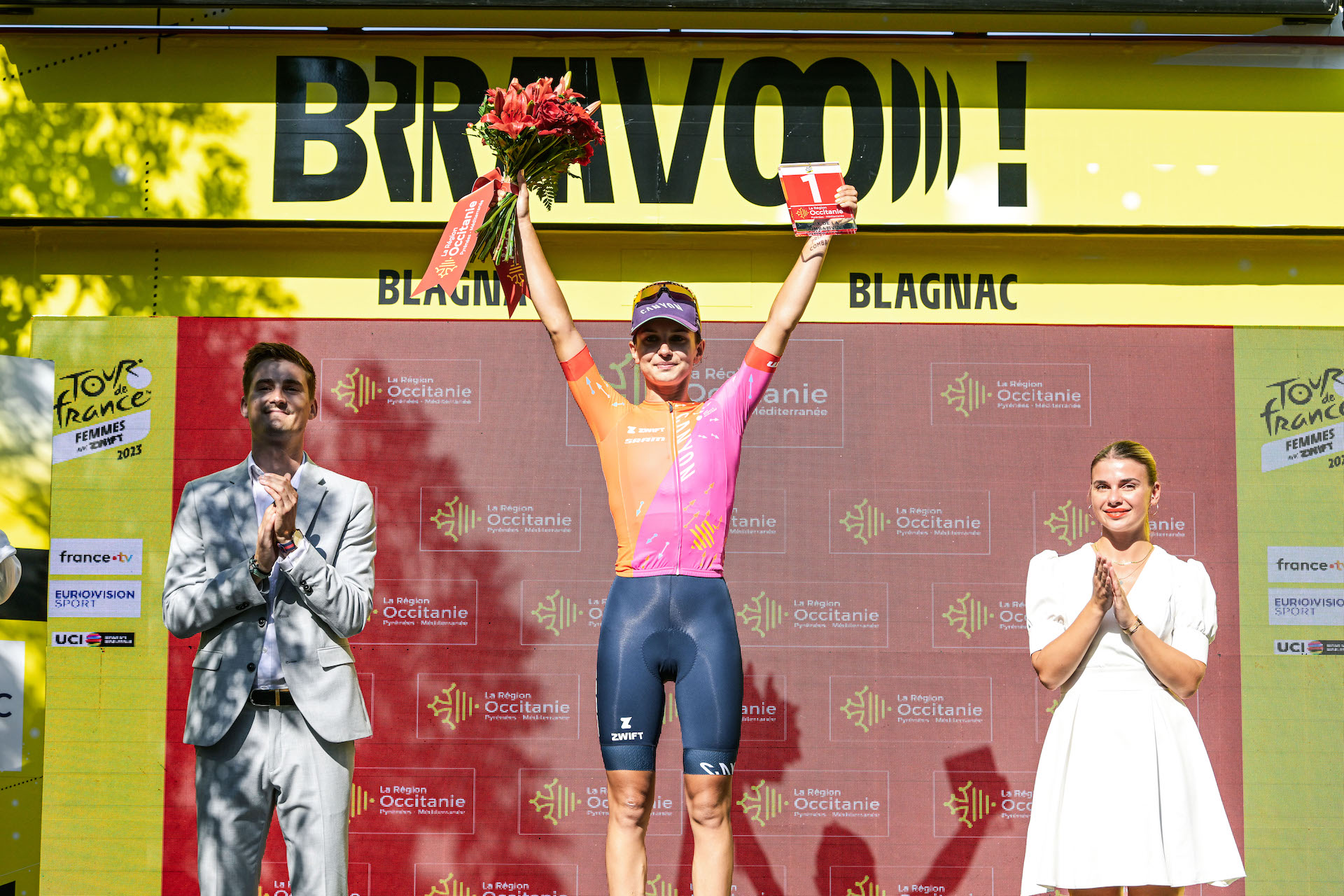
While she is not the biggest name on the Canyon-SRAM squad, Skalniak-Sójka is no stranger to victory. She managed a remarkable 14 wins in the 2022 season, earning her a recall to the WorldTour this year. But a win at the Tour de France Femmes would easily have been the biggest result of her career. Thankfully, there was a consolation prize for her concerted effort today.
“We are glad that she got rewarded for the most competitive rider jersey,” Lauke says. “So she has been on the podium and this is good for her. I'm happy about this that she's not empty-handed.”
As Lauke is talking, Skalniak-Sójka arrives at the Canyon-SRAM campervan, her media duties now complete. She’s in tears again. Team staffers gather around her and offer words of encouragement. “You were on the podium!” says Lauke, giving her a hug.
Skalniak-Sójka is smiling through her tears as she walks slowly up the steps into the campervan. A beaming Kasia Niewiadoma is holding the curtain open as Skalniak-Sójka steps inside.
So close to a breakout victory, and yet so far.
Did we do a good job with this story?

